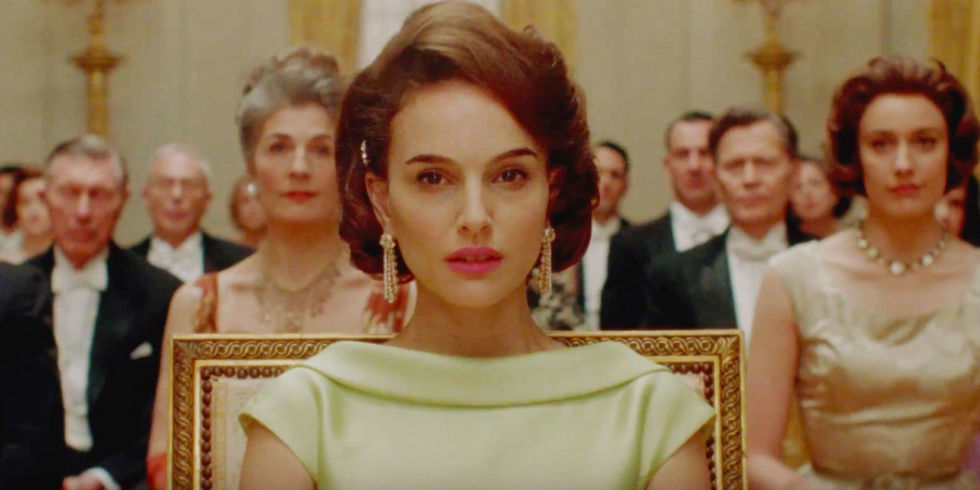By Mark Saldana
Rating: 3.5 (Out of 4 Stars)
Much like its subject, the film Jackie has moments that look absolutely gorgeous, elegant, and poised when it needs to be. The other moments, however, have a bleak appearance to match the despair and pain experienced by the widow Jacqueline Kennedy following the shocking assassination of her husband. Director Pablo Larrain, working with cinematographer Stephane Fontaine and a talented visual design department has made a film that is both visually striking and emotionally charged when it comes to the story and character development. Natalie Portman delivers a beautiful and powerful performance that deserves nominations in all movie awards for the year.
From 1960 to 1963, Jacqueline Bouvier Kennedy was First Lady to President John F. Kennedy when he was horrifically assassinated during a visit to Dallas, Texas. Jackie, as her closest friends and family called her, will always be known for her sense of fashion and style, as well as her graceful presence. During her time as First Lady, she takes charge of a historical restoration to the White House. Jackie lives in what seems to be a fairy tale fantasy; however, the fame that comes with the role does have its stresses. Her world gets completely demolished when her husband is killed, but Jackie must maintain a courageous facade and even more grace under pressure as her emotions inside feel like they are falling apart.
Written by Noah Oppenheim, Jackie is one of the more powerful and emotional biopics I have seen in recent years. Larrain and Oppenheim do an amazing job presenting Jacqueline Kennedy as a superbly developed character–a real, flesh and blood woman with character flaws, emotions and a palpable inner strength. Oppenheim and Larrain also present Jackie as a symbol of female empowerment in that she must stand up to the men wanting to be in charge of everything regarding her husband’s affairs, despite Jackie’s stern wishes. The film does have a few dramatic contrivances which feel obvious when they play out, but there aren’t too many of these.
The film has a mostly superb supporting cast with Peter Sarsgaard as Bobby Kennedy, Greta Gerwig as Nancy Tuckerman, Billy Crudup as Theodore H. White, a journalist interviewing Jackie following her husband’s death, and John Hurt as a priest. It is Natalie Portman, though, who appropriately stands out as the star of this movie. Portman, not only adopts Jackie’s signature accent, but also embodies the grace and beauty for which the First Lady is known. Portman also beautifully conveys the haunting vulnerability and anguish that Jackie must have felt after losing her husband in such a horrible way. It is a performance that will be long remembered, regardless of the results of the awards season.
The film, even with its few issues, should be heralded as an exquisite portrait of a beautiful, strong woman who had to stand up for herself in a male dominated world, even though she was falling apart inside. When people think of Jacqueline Kennedy, they often envision a symbol of lovely majesty They often forget, or don’t realize that a real, flesh and blood woman with inner turmoils existed within the seemingly perfect facade. Pablo Larrain and Natalie Portman recreate the best, the worst and everything in between that made up the woman who was Jacqueline Bouvier Kennedy.
